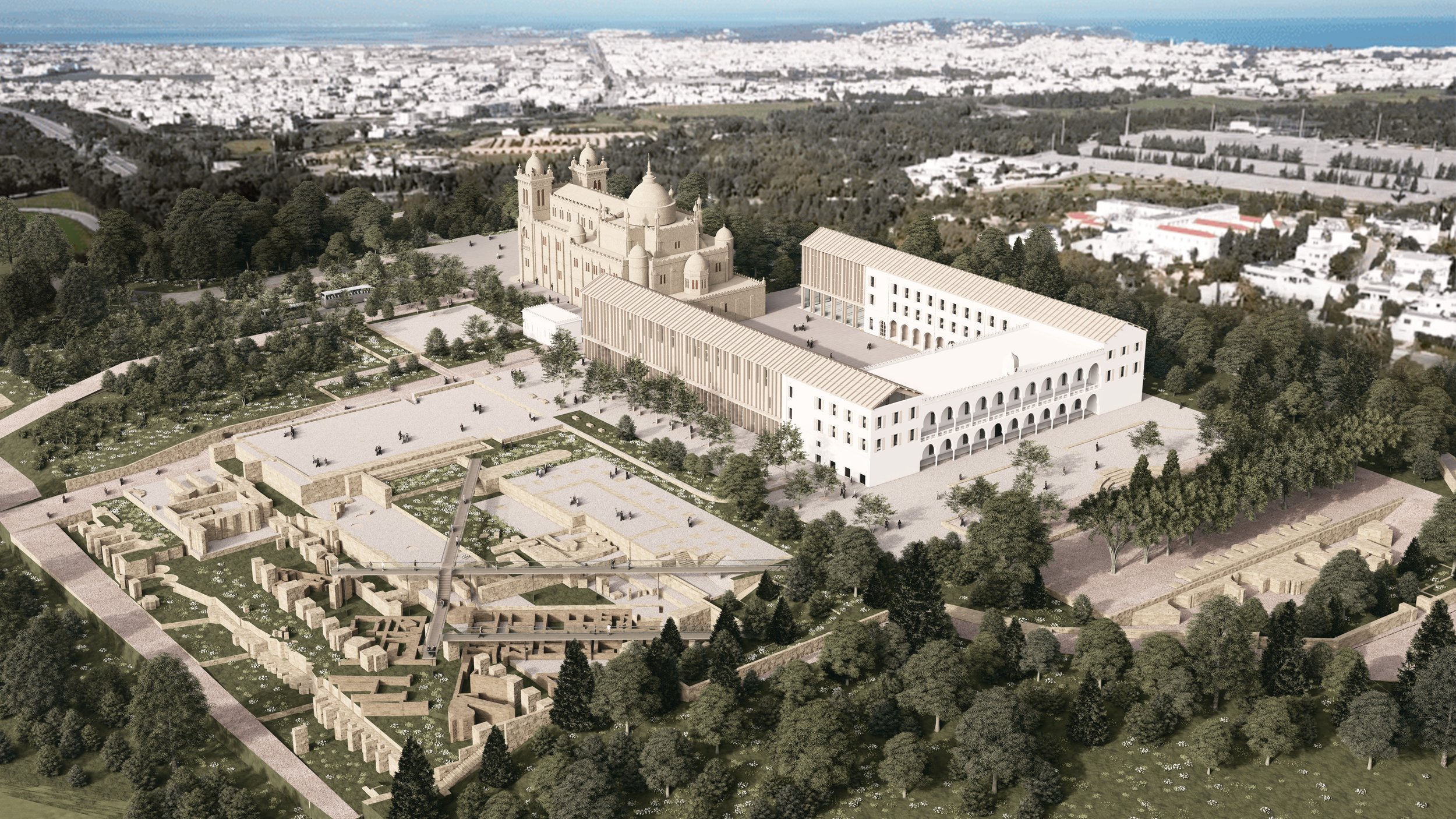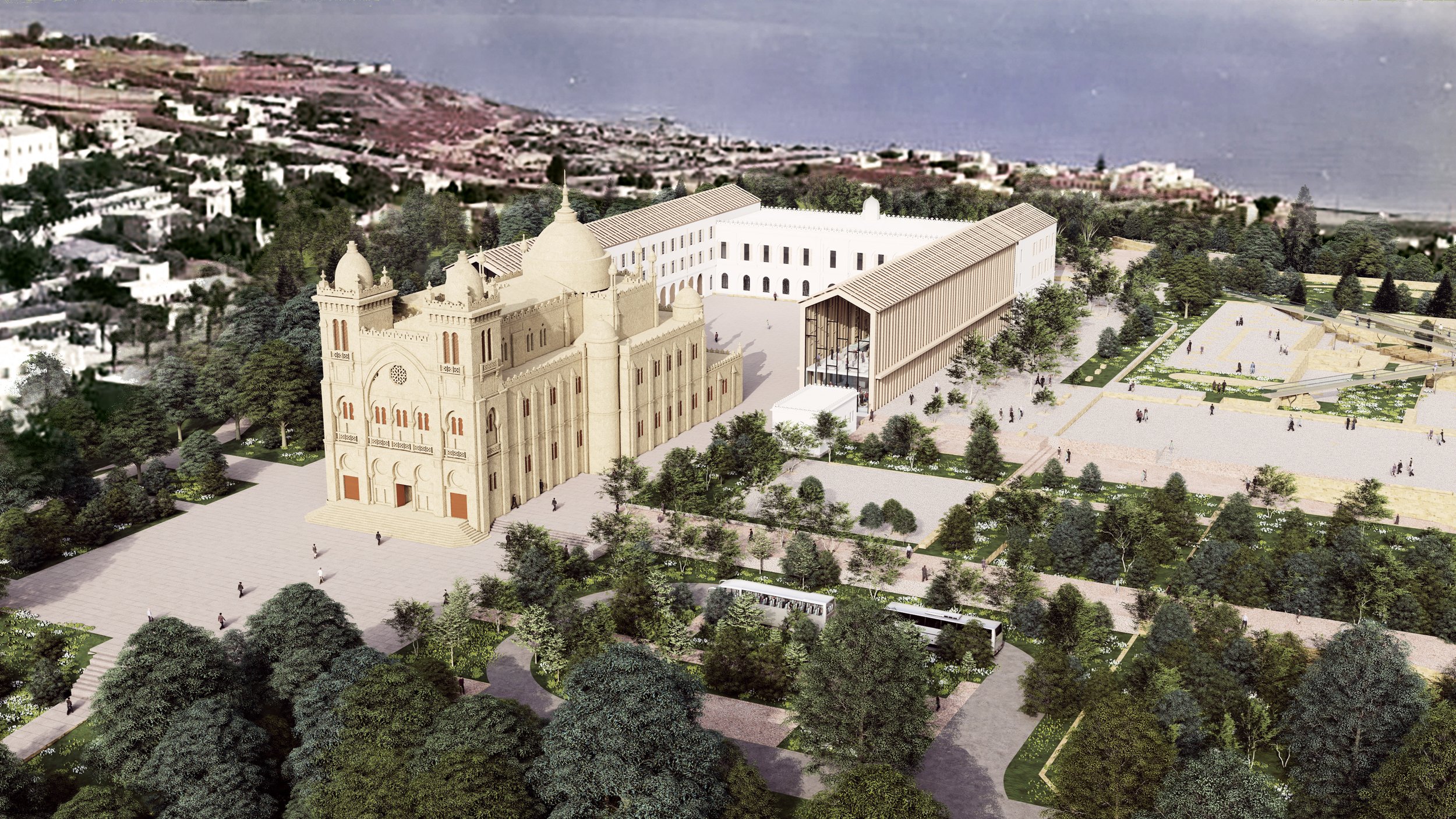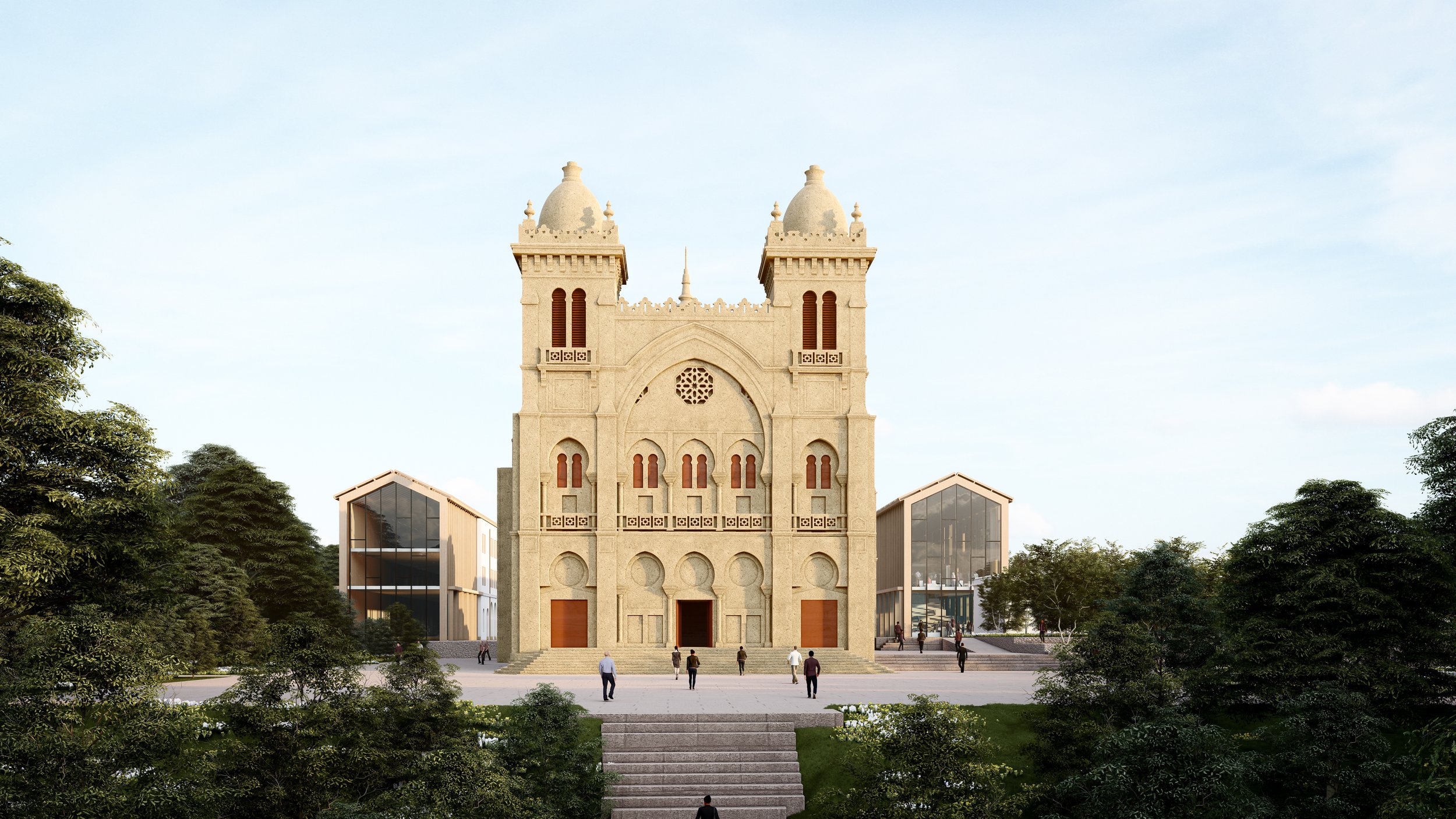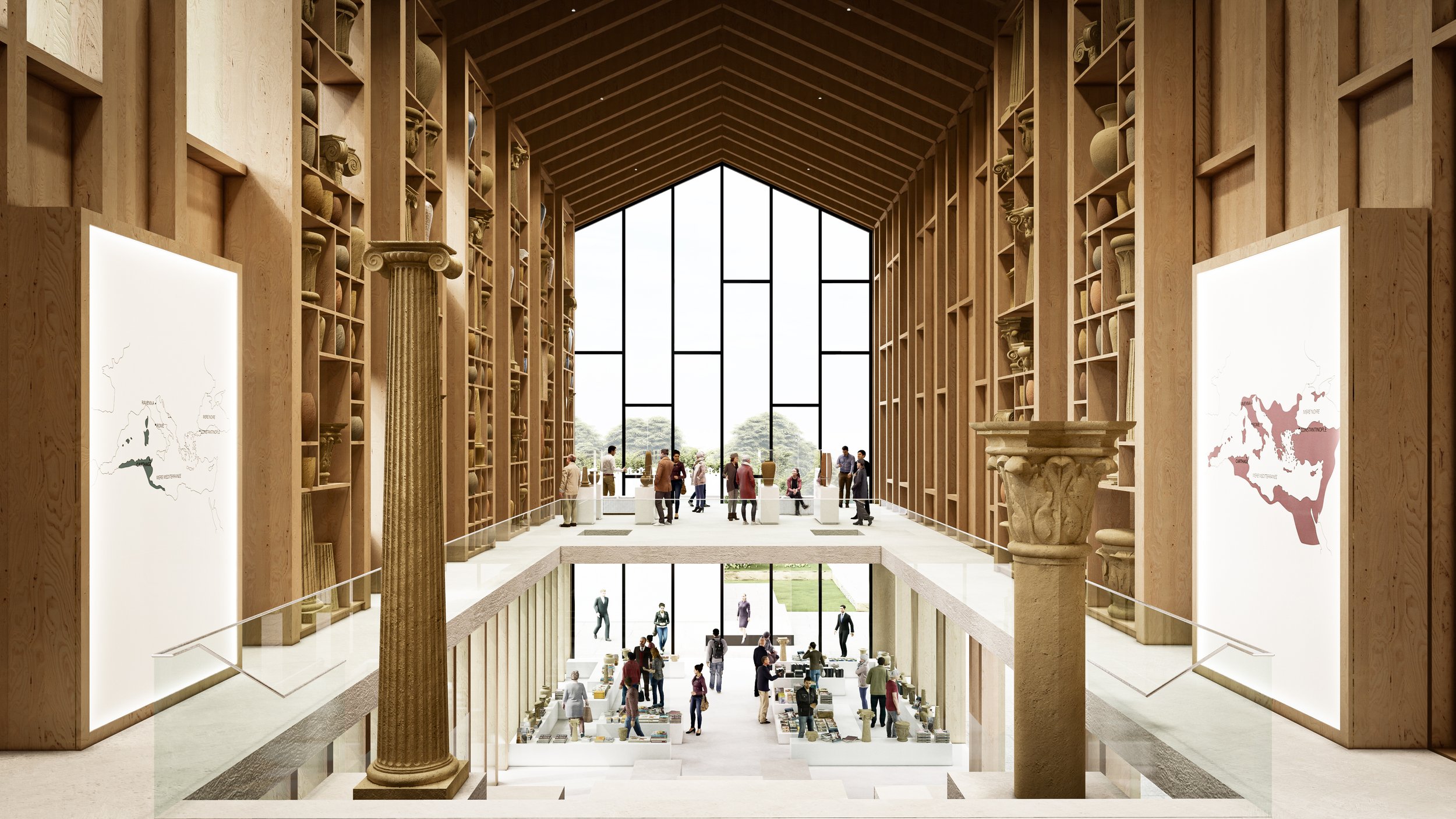MNC
Musée National de Carthage
Carthage, Tunisie - 2023
FR |
Situé sur le site archéologique au sommet de la colline de Byrsa, dans la ville de Carthage, le musée a pour objet essentiel d’améliorer la lecture, l’expérience et la compréhension du site et de s’inscrire avec douceur pour proposer une organisation compacte de l’ensemble des usages nécessaire au bon fonctionnement de ce lieu d’exception. L’intervention se décompose en trois temps, par une clarification de l’existant en restituant minutieuse les trois corps de bâtiments du séminaire des Pères Blancs. Ensuite on supprime les traces contemporaines en déconstruisant l’ensemble des bâtiments récents. Enfin on invite une nouvelle strate afin de compléter cet ensemble, ce nouveau bâtiment en bois sera ainsi le plus ‘fragile’, le plus temporaire.
Le site bénéficie d’un rapport privilégié au lointain et grand paysage offrant des vues sur Carthage, Tunis et la méditerranée. Le projet propose une mise en scène de ces perspectives par des systèmes de chemins, de belvédères et de passerelles positionnés dans des alignements paysagers stratégiques. Le sol devient un outil de spatialisation historique et temporel, afin de faciliter la compréhension des strates historiques marqués des époques puniques, romaines et contemporaines. Le projet propose de procéder à une renaturation du site en ramenant et densifiant la forêt existante autour du site, de créer un couvre-sol de plantes spécialement sélectionnées.
ENG |
Located on the archaeological site at the top of the Byrsa hill in the city of Carthage, the museum's essential aim is to improve the reading, experience, and understanding of the site, and to fit in smoothly to propose a compact organization of all the uses necessary for the proper functioning of this exceptional place. The project is divided into three stages, starting with a clarification of the existing site, by meticulously restoring the three main buildings of the Pères Blancs seminary. Next, we remove contemporary traces by deconstructing all recent buildings. Finally, a new stratum will be added to complete the ensemble. The new wooden building will be the most "fragile", the most temporary.
The site benefits from a privileged relationship with the distant landscape, with views over Carthage, Tunis, and the Mediterranean. The project proposes a staging of these perspectives through systems of paths, belvederes and footbridges positioned in strategic landscape alignments. The ground becomes a tool for historical and temporal spatialization, facilitating understanding of the historical strata marked by the Punic, Roman, and contemporary eras. The project proposes to renaturalize the site by bringing back and densifying the existing forest around the site, and to create a ground cover of specially selected plants.






